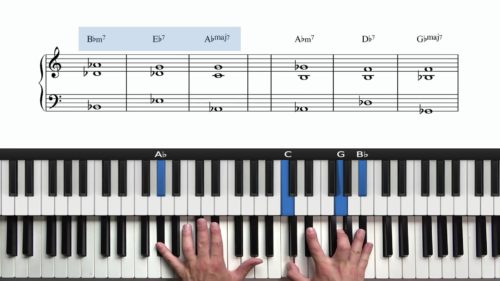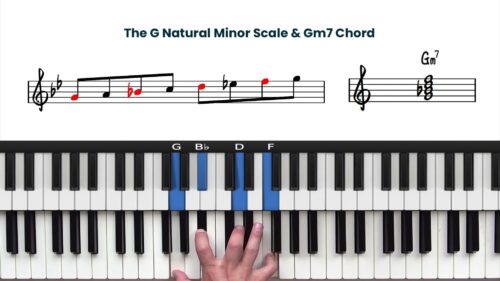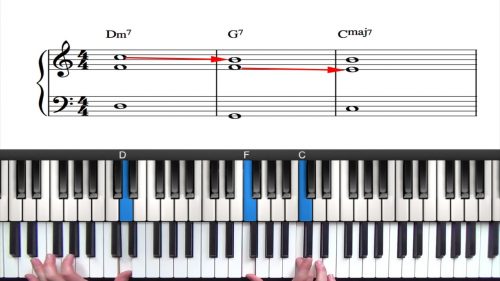"Misty" – The A Section
Welcome to the first jazz standard lesson in our Novice-level course on the key of Eb major. In this lesson, we focus on the first 8 bars of the tune "Misty".
The first 8 bars is also known as the ‘A section’. The songs follows an AABA form and so by mastering the first 8 bars, we build a very strong foundation for learning the entire song.
Root Position To Spread Voicings
We start by playing the chords in root position to clearly visualise their shapes. However in jazz piano, we typically spread the notes over two hands. This technique, known as ‘2-handed spread voicings’ creates a more balanced and resonant sound compared to playing chords in their basic, closed positions.
Spread Voicings Configuration For Jazz Piano
Spread voicings involve playing the root note with the left hand in the lower registers while the right hand plays the other important tones and the melody at the top. This method helps to avoid the clunky, condensed sound of closed position chords and instead creates a more sophisticated harmonic texture.
Spread Voicings & Guide Tones
We also explore the concept of smoothly transitioning between chords by outlining the half step movement of 7ths falling to 3rds in 25 and 251 progressions. This involves minimal hand movement and creates smoothly connected chord progressions that are essential for a polished jazz piano performance.
By the end of this lesson, you’ll be able to play the first 8 bars of "Misty" using spread voicings and understand how to transition smoothly between chords.
Practice Tips
-
Basic Chord Practice: Practice playing the 7th chords in root position to get comfortable with the basic shapes and sounds.
-
Create Spread Voicings: Next spread the notes of the 7th chords over 2 hands focusing on creating a balanced sound and an even spread of notes on the keyboard.
-
Recognising Progressions: Pay special attention to the 251 and 3625 progressions and how the 7ths fall a half step to the 3rd of the next chord.
- Internalise the Melody: Isolate the melody and practice slowly and accurately to master the big melodic jumps and arpeggio sequences.






